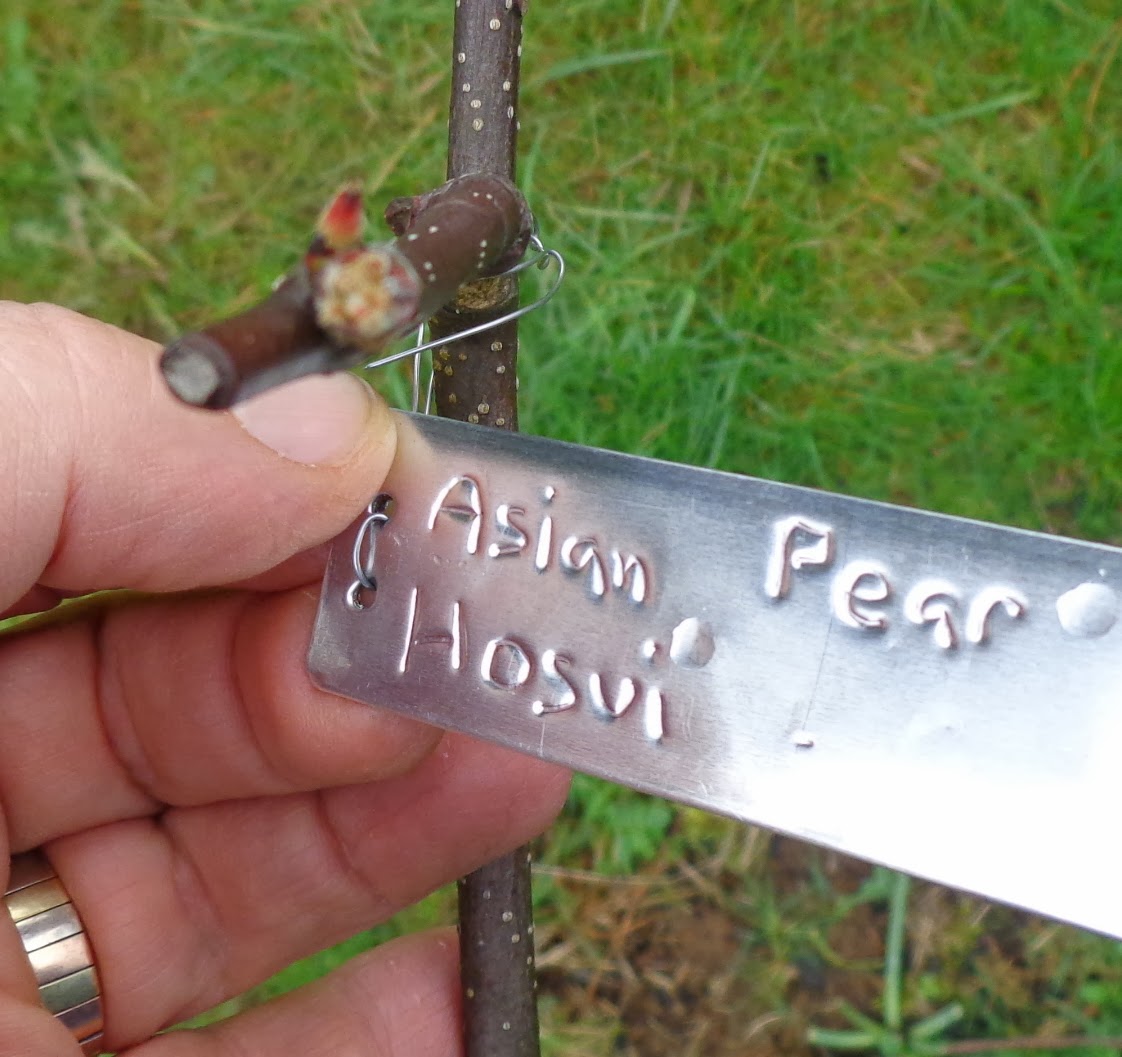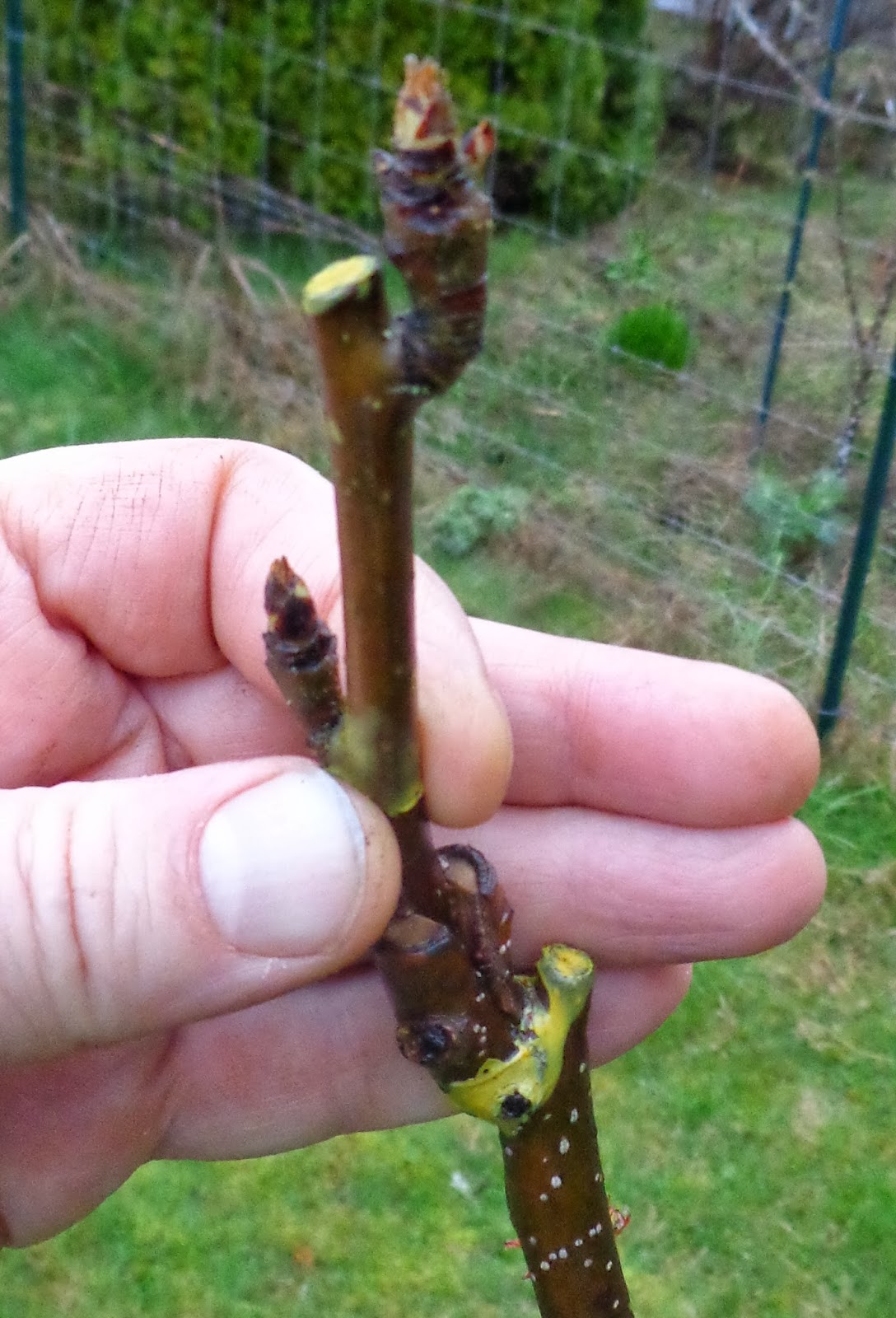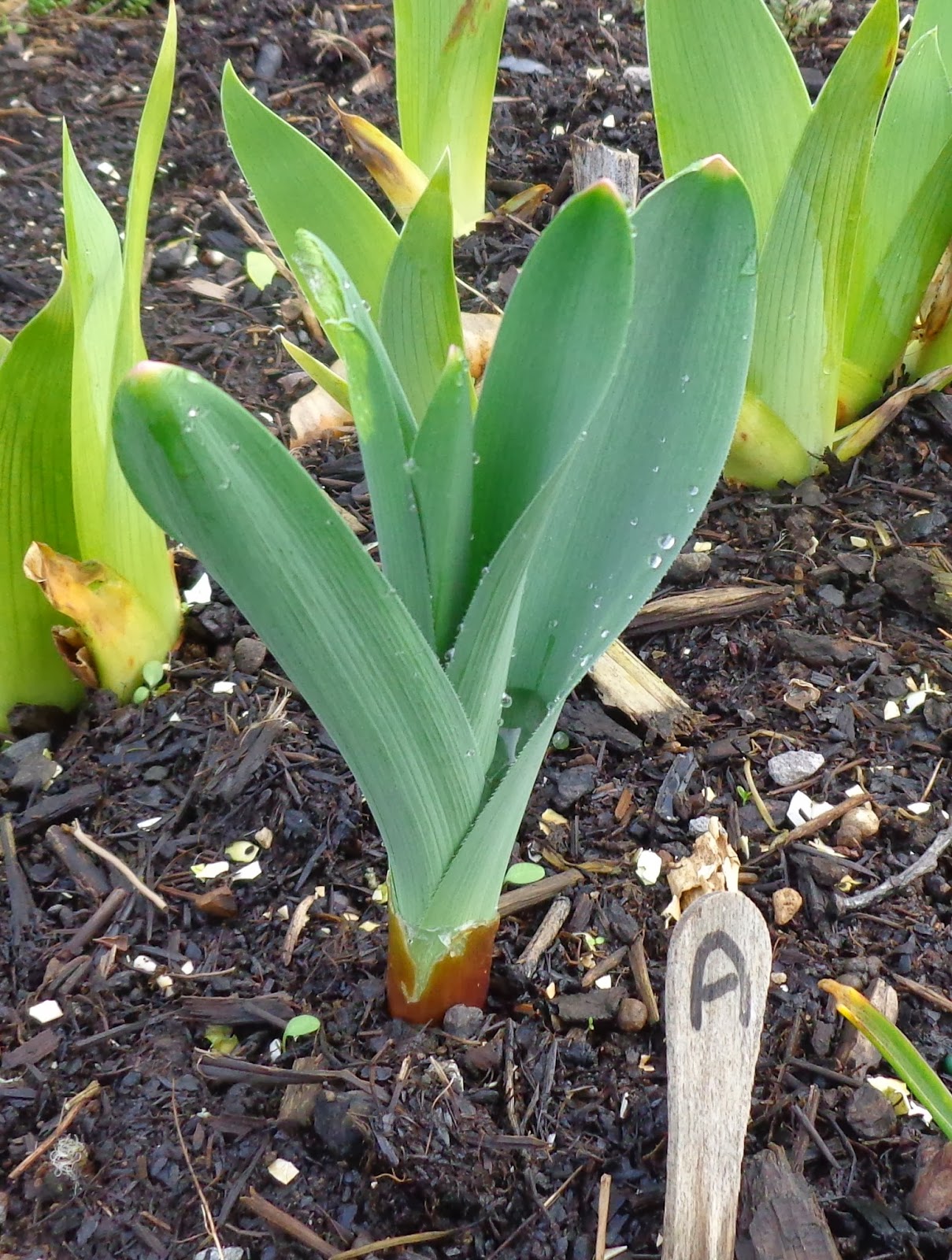 |
| Chinese Chives, rejuvenation project |
 |
| Garlic Inchelium Red and others |
 |
| Cilantro, Yellow Potato Onion, and some iris starts |
Haven't done much, due to illness. It only takes a small effort to do some things in the yard and garden.
Garlic Chives. These are the ones I dug out of half-barrel bed in Vancouver and planted in raised bed at Battleground. I've added a row cover to the bed, although it's off today to let in rain. Probably due to warming effect of row cover, they are more vigorous than other rows of Chinese chives that I established last year. Here they have more room, and a real local soil/compost mix instead of potting soil. I hope they will rejuvenate and provide significantly more vegetable.
Garlic bed. The
Inchelium Red looks like corn. It's big and vigorous. The
German Porcelain is doing pretty well too. A few plants did not make it through the winter but most are sturdy and healthy appearing. The row of unknown is a rescue variety. The starts were smaller and later, so not a fair comparison.
The overwintering
cilantro is growing nicely. I didn't know until now that cilantro could be fall planted. Good lesson to learn. The
Yellow Potato Onion is less vigorous this year. I don't know why. It seems to be growing now, including bulbs that did not germinate before winter started.
 |
| Egyptian Walking Onions |
The
Egyptian Walking Onions are growing nicely. Whatever was eating them seems to be leaving them alone now. We should have fresh scallions from these in 2 or 3 weeks. We could now, if we will settle for small ones. As apparent in the photo, on the left I replanted bulbs that I kept from full grown plants. On the right are small topsets. The bulbs have much larger, sturdier plants. This difference should mean an extended window for harvesting scallions.
Raining - several inches in past few days. Having prepared raised beds during the winter, no digging is needed to start some seeds. I planted a row of
cilantro, a row of
spinach, and a row of
Cincinnati Market Radish, a long carrot-like variety. The spinach and radishes may need protection from animals. Cilantro does not need protection.
 |
| Seeds Planted 3.6.14, Radishes, Spinach, Cilantro |
Not shown, the low tunnel bed has nice onion starts, about 2 inches tall. The
radishes,
turnips, and
mesclun are nice little rows, with big cotyledons but no adult leaves yet. I don't know if the cover is protecting from animals - mice/voles - but so far so good. Rabbits and deer can't get in, I think.
Peas haven't come up yet. I will plant some in containers.
Overall I am very pleased. Even though I don't know what I am doing sometimes, some useful and fun vegetables made it through a winter with historic freezes, and are growing earlier than the soil can be worked for Spring gardening.

















